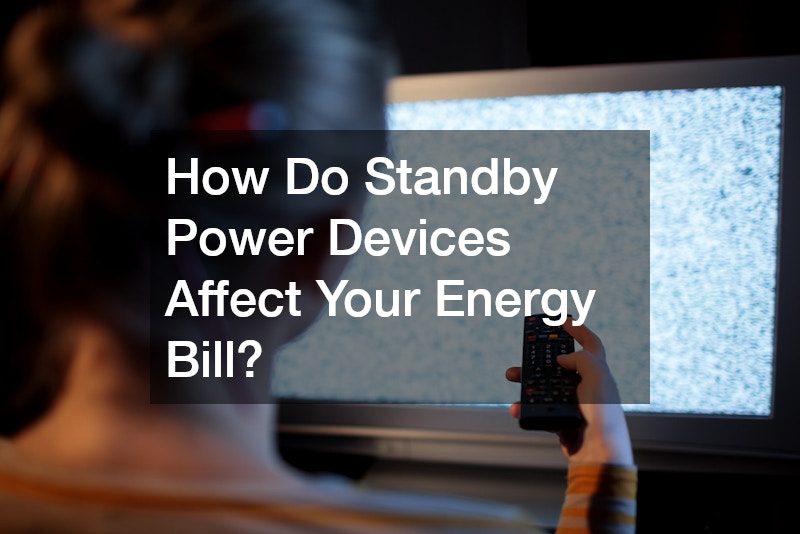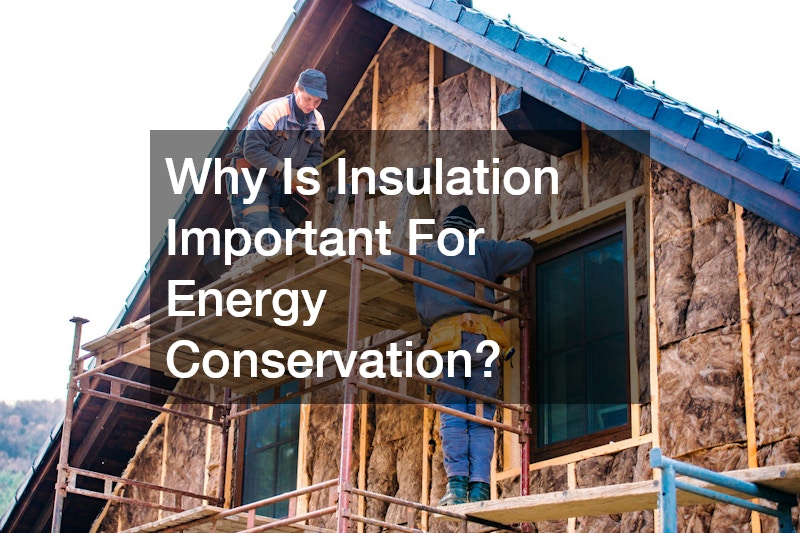Many homeowners are surprised when their utility bills seem higher than expected, despite careful use of heating, cooling, and lighting. Often, the culprits are everyday items that quietly consume energy without drawing attention. From appliances in standby mode to outdated heating systems, these hidden energy wasters can steadily inflate costs month after month. Recognizing and addressing these contributors can lead to significant savings and a more energy-efficient home.
What Are The Most Common Energy Wasters In Households?
Identifying Common Culprits
Homes are filled with devices and systems that consume energy continuously. Items such as old refrigerators, air conditioners, and poorly insulated water heaters often operate at lower efficiency than homeowners realize. Even seemingly minor devices like phone chargers or entertainment systems can collectively contribute to higher bills over time. Recognizing which elements of your home consume the most energy is the first step toward reducing unnecessary costs.
Patterns Of Usage
Understanding household energy usage patterns helps identify high-consumption periods. Energy-intensive activities often occur during peak hours, such as mornings when multiple appliances run simultaneously or evenings when lighting, heating, and electronics overlap. Tracking these patterns allows homeowners to adjust behaviors and consider upgrades that reduce energy waste.
Comparative Energy Consumption
Not all appliances are created equal. A new appliance typically operates more efficiently than older counterparts, sometimes using half the electricity. Comparing energy consumption across similar devices highlights where changes can be most impactful. Refrigerators, HVAC systems, and water heaters are usually the primary contributors to excessive energy use in homes.
Seasonal Variation Impact
Energy usage fluctuates throughout the year. In summer, air conditioning can dominate electricity bills, while winter increases heating costs. Being mindful of seasonal variations ensures that the energy-wasting items are targeted at the times they impact the most. Seasonal adjustments, such as using modern shades to reduce heat gain or improving insulation, can mitigate the effects.
Strategies For Identification
Homeowners can take multiple approaches to identify energy wasters. Using smart meters, monitoring utility bills, and consulting with an ac company or home electrical service provider can uncover inefficiencies. Professional assessments often reveal issues that are not obvious, such as hidden leaks in ductwork or outdated appliances running inefficiently.
How Do Standby Power Devices Affect Your Energy Bill?

Understanding Phantom Load
Phantom load, also known as standby power, refers to the electricity consumed by devices even when they are not actively in use. Many electronics draw power continuously to maintain settings, charge batteries, or remain ready for quick activation. While individually these devices use minimal energy, their cumulative effect across multiple devices can be substantial.
Examples Of Standby Power Devices
Common standby power devices include televisions, gaming consoles, printers, and kitchen appliances with digital displays. Even items like microwave ovens and coffee makers consume energy in standby mode. Identifying and addressing these devices can reduce wasted electricity.
Calculating Energy Loss
Quantifying phantom load helps homeowners understand potential savings. Small amounts of energy consumption add up over time, often equating to tens or hundreds of dollars annually. Calculating usage requires examining wattage and hours of standby operation for each device.
Reducing Phantom Load
Unplugging devices, using power strips, or employing smart plugs can effectively reduce phantom load. Many modern home electrical service systems offer solutions to monitor and cut off unnecessary energy draw, creating long-term cost savings without sacrificing convenience.
Long-Term Cost Implications
Ignoring standby power can result in gradually increasing utility bills over time. By reducing phantom load, homeowners free up budget for energy-efficient upgrades like modern shades, a new appliance, or HVAC improvements. These adjustments yield both financial and environmental benefits.
In What Ways Do Old Appliances Contribute To Higher Bills?
Energy Efficiency Decline
Older appliances tend to lose efficiency as they age. Refrigerators, ovens, and washing machines often require more electricity to perform the same tasks as modern versions. This decline directly impacts monthly utility bills and increases the environmental footprint.
Identifying Outdated Models
Homeowners can determine appliance age by model numbers and energy rating labels. Those without Energy Star certifications or with signs of wear may be inefficient. Consulting contractors or ac company specialists can help identify appliances that are costing more to operate than necessary.
Cost-Benefit Of Replacement
Replacing outdated appliances with energy-efficient models often leads to immediate and measurable savings. While the upfront cost may be significant, the long-term reduction in energy usage and maintenance expenses typically outweighs the initial investment. Many programs also offer rebates or incentives to encourage upgrades.
Recycling And Upgrade Programs
Many manufacturers and local municipalities offer recycling or trade-in programs to make upgrading easier and environmentally responsible. Participating in these programs ensures old appliances are disposed of safely while making room for more efficient options.
Maintaining Older Appliances Efficiently
For homeowners not ready to replace older appliances, routine maintenance improves efficiency. Cleaning coils, inspecting water heaters, and defrosting freezers are small steps that prevent energy waste while extending appliance lifespan. Local plumbers or home electrical service professionals can provide guidance for optimal maintenance.
Can Light Bulbs Really Make A Big Difference?

Types Of Light Bulbs
Lighting is a significant, though often underestimated, energy consumer. Traditional incandescent bulbs use far more electricity than compact fluorescent lamps (CFLs) or LEDs. Modern shades and strategic lighting placement can further optimize energy use.
Energy Consumption Comparison
Switching from incandescent to LED lighting reduces energy usage substantially, often by up to 80 percent. Even though LEDs cost more upfront, their longevity and efficiency result in considerable long-term savings.
Lighting Habits That Waste Energy
Leaving lights on in unoccupied rooms, using excessively bright bulbs, or relying on decorative lighting without purpose contribute to wasted electricity. Evaluating lighting habits alongside hardware upgrades provides the greatest benefit.
Switching To LEDs
Transitioning to LED bulbs is one of the simplest and most effective energy-saving measures. LEDs consume less power, produce less heat, and offer longer operational life, reducing both electricity bills and replacement frequency.
Long-Term Lighting Strategy
Developing a lighting strategy that combines modern shades, energy-efficient bulbs, and smart switches ensures continued energy savings. Integrating these measures with home automation or programmable lighting systems can further reduce unnecessary consumption.
Are HVAC Systems A Major Source Of Energy Waste?
Understanding HVAC Efficiency
Heating, ventilation, and air conditioning systems are among the largest energy consumers in a household. Inefficient or poorly maintained units force homeowners to pay more for the same level of comfort. Consulting an ac company helps identify inefficiencies and implement solutions.
Common HVAC Mistakes
Neglecting regular maintenance, using outdated thermostats, or improperly sizing the system contribute to energy waste. Simple missteps, such as closing vents in unused rooms, can increase strain and reduce efficiency.
Regular Maintenance Practices
Routine maintenance, including cleaning filters, inspecting ductwork, and scheduling professional checkups, ensures HVAC systems operate optimally. Air duct cleaning companies can assist in maintaining airflow and efficiency, reducing utility costs.
Smart Thermostat Utilization
Smart thermostats allow precise temperature control, reducing wasted energy during peak hours. Programming temperature setbacks for night and away periods optimizes consumption while maintaining comfort.
Future-Proofing Your HVAC
Investing in energy-efficient HVAC technology or retrofitting existing systems improves long-term savings. Coupling these upgrades with modern shades, insulation improvements, or new appliances creates a holistic approach to household energy efficiency.
Why Is Insulation Important For Energy Conservation?

Types Of Insulation
Proper insulation reduces heat transfer, keeping homes warmer in winter and cooler in summer. Common types include fiberglass, spray foam, and cellulose, each offering unique benefits depending on the space.
Insulation Impact On Energy Usage
Poor insulation forces heating and cooling systems to work harder, driving up utility bills. Sealing gaps, adding layers, or installing insulated doors and windows prevents energy loss.
Detecting Insulation Issues
Signs of inadequate insulation include drafts, uneven temperatures, or high energy bills despite moderate use. Contractors can perform home energy audits to identify and correct problem areas.
Improving Existing Insulation
Adding insulation in attics, walls, or crawl spaces enhances efficiency without major renovations. Combined with home electrical service checks and modern shades, energy savings become more pronounced.
Cost Of Insulation Upgrade
Though insulation improvements involve upfront costs, the return on investment comes quickly through lower heating and cooling bills. Budgeting for these upgrades alongside garage door repairs or other home improvements maximizes value.
How Do Water Heaters Contribute To Energy Costs?
Water Heater Types And Efficiency
Water heating is a substantial part of household energy use. Tankless, hybrid, and conventional water heaters vary in efficiency, with modern models consuming significantly less power.
The Cost Of Overheating
Heating more water than necessary or maintaining high temperatures increases energy bills unnecessarily. Adjusting temperature settings and reducing standby heat loss saves both energy and money.
Insulating Your Water Heater
Insulating water heaters and pipes reduces heat loss, making systems more efficient. Small investments in insulation can lead to notable monthly savings.
Smart Water Heater Practices
Using timers, lowering temperature settings, and scheduling maintenance help optimize performance. Local plumbers can advise on practices that maximize efficiency while extending appliance lifespan.
The Future Of Water Heating
Innovative water heater designs promise improved energy efficiency and reliability. Upgrading to energy-conscious models complements other household measures like new appliances and smart lighting.
Are Refrigerators And Freezers Often Overlooked?
Operating Efficiency Of Refrigerators
Refrigerators and freezers run continuously, making efficiency crucial. Older models often consume far more energy than modern units with high-efficiency ratings.
Temperature Settings And Energy Use
Maintaining correct temperature settings balances food preservation with energy consumption. Overcooling wastes electricity, while undercooling risks food safety.
Old Vs. New Models
Replacing outdated refrigerators or freezers with Energy Star-certified units results in immediate reductions in electricity bills. The cost savings often justify the investment in a relatively short time.
Organizing For Efficiency
Proper organization allows doors to remain closed longer and airflow to circulate freely. Efficient use of space prevents energy waste while improving usability.
Routine Maintenance Tips
Regular cleaning of coils, checking seals, and defrosting prevents energy loss. Air duct cleaning companies or home electrical service providers may offer guidance for optimal appliance upkeep.
What Role Do Computers And Electronics Play In Wasting Energy?

Energy Use Of Computers
Computers, gaming consoles, and peripherals draw significant energy, especially when left on continuously. Understanding their consumption patterns allows for more informed usage.
During And After Use Power Consumption
Even when not in active use, many devices continue drawing electricity. Power-saving settings, unplugging, or using energy-efficient electronics reduce unnecessary energy expenditure.
Managing Peripheral Devices
Printers, monitors, and external drives contribute to overall energy use. Consolidating functions and turning off peripherals when idle helps lower energy bills.
Sleep And Power Saving Modes
Enabling sleep or hibernation modes reduces consumption without sacrificing convenience. Combining these features with smart plugs or timers creates additional savings.
Sector Innovations And Solutions
Advancements in electronics aim to minimize energy waste. Investing in energy-efficient devices, upgrading outdated systems, and consulting an ac company or contractors ensures sustainable energy use.
How Can We Implement Effective Energy-Saving Practices?
Understanding Energy Audits
Conducting a professional energy audit identifies hidden energy wasters throughout the home. Audits often reveal issues related to insulation, HVAC systems, lighting, and appliances.
Investing In Energy-Efficient Tech
Replacing outdated systems with energy-efficient alternatives, including new appliances, lighting, and HVAC units, is key to long-term savings. Modern shades and water heater upgrades complement these efforts.
Creating A Saving Culture
Encouraging household members to adopt energy-conscious habits, such as unplugging devices and adjusting thermostats, reinforces efficiency. Education and awareness are critical components of sustained energy savings.
Incentive Programs And Grants
Local governments, utility companies, and manufacturers frequently offer rebates and grants for energy-efficient improvements. Homeowners can benefit from these programs while reducing overall costs.
Long-Term Energy Strategy Development
Developing a comprehensive plan that integrates appliance upgrades, insulation, HVAC improvements, and efficient lighting ensures ongoing energy savings. Partnering with contractors, local tree trimmers, and specialized service providers maximizes the effectiveness of each investment.
Hidden energy wasters silently inflate household utility bills, but awareness and proactive management can reverse this trend. From phantom power devices to outdated appliances, inefficient lighting, and poorly maintained HVAC systems, each element contributes to unnecessary energy consumption. By adopting energy-efficient practices, upgrading to new appliances, and utilizing services from an AC company, roofing company, plumbers, or home electrical service provider, homeowners can significantly reduce costs. Simple changes, such as scheduling regular inspections, installing smart home devices, or replacing worn-out insulation, can also have a substantial impact. Combining these steps with modern shades, garage door repairs, and routine professional maintenance ensures long-term energy efficiency, cost savings, and a more sustainable home environment. Over time, these investments not only lower utility bills but also increase property value, improve comfort, and reduce the household’s environmental footprint, creating a smarter, more responsible living space for years to come.